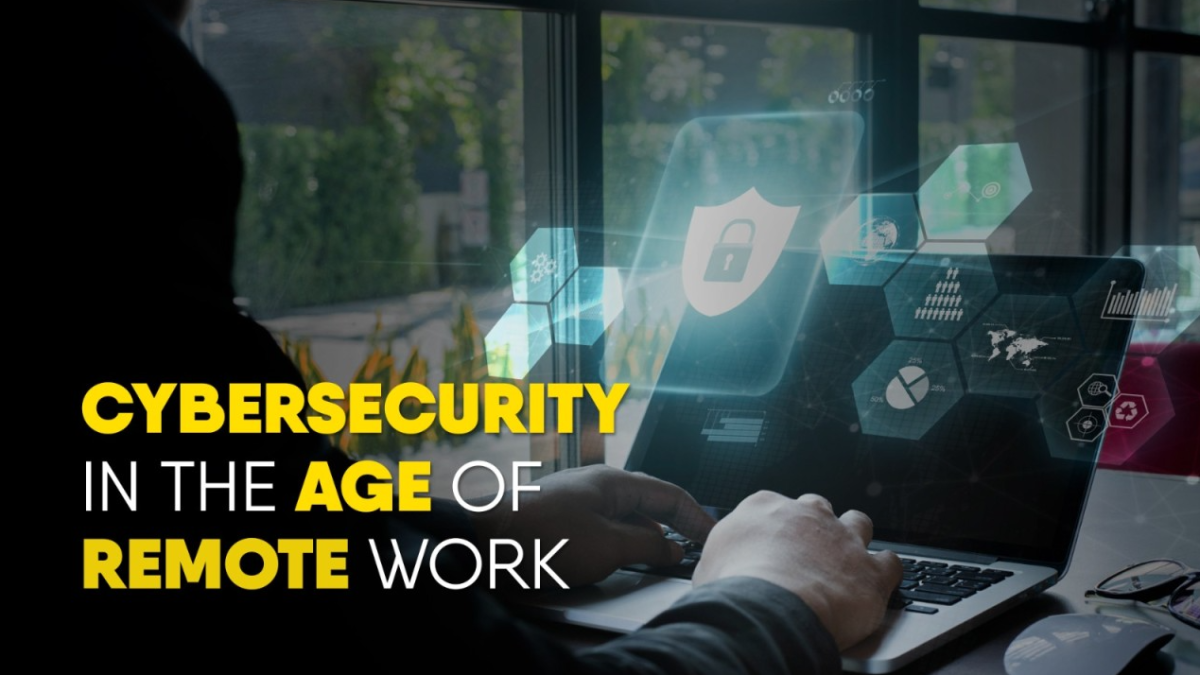- Call Now for a Free Evaluation
- +2347034964068
Strengthening Cybersecurity in the Age of Remote Work
The shift to remote work, accelerated by the COVID-19 pandemic, has brought unparalleled flexibility and convenience to the workforce. However, it has also introduced significant cybersecurity challenges. As more employees work from home, the risk of cyberattacks has increased, making it crucial for organizations to bolster their cybersecurity measures. This article explores the key cybersecurity threats in remote work, strategies to mitigate these risks, and best practices for maintaining a secure remote work environment.
Key Cybersecurity Threats in Remote Work
1. Phishing Attacks
Phishing attacks, where malicious actors deceive individuals into revealing sensitive information, have surged with the rise of remote work. Cybercriminals often exploit the fear and uncertainty surrounding global events to craft convincing phishing emails.
Threats:
- Credential Theft: Stealing login information to access corporate systems.
- Malware Infections: Distributing malicious software through email attachments or links.
- Data Breaches: Gaining unauthorized access to sensitive company data.
2. Unsecured Wi-Fi Networks
Remote workers often use unsecured home or public Wi-Fi networks, which can be vulnerable to cyberattacks. Hackers can intercept data transmitted over these networks, leading to data breaches.
Threats:
- Data Interception: Eavesdropping on communications to steal sensitive information.
- Man-in-the-Middle Attacks: Intercepting and altering communications between two parties.
- Network Intrusions: Gaining unauthorized access to corporate networks.
3. Use of Personal Devices
Many remote workers use personal devices for work purposes, which may not have the same level of security as corporate devices. These devices can become entry points for cyberattacks.
Threats:
- Lack of Security Controls: Personal devices may lack necessary security software and updates.
- Device Theft or Loss: Physical theft or loss of devices containing sensitive information.
- Unregulated Applications: Use of unauthorized applications that may introduce security vulnerabilities.
4. Insider Threats
Insider threats, whether malicious or accidental, pose a significant risk to remote work environments. Employees may unintentionally leak sensitive information or intentionally misuse their access for personal gain.
Threats:
- Data Leakage: Accidental sharing of confidential information.
- Unauthorized Access: Employees accessing data beyond their authorization level.
- Malicious Actions: Deliberate sabotage or data theft by disgruntled employees.
Strategies to Mitigate Cybersecurity Risks
1. Implement Multi-Factor Authentication (MFA)
MFA adds an extra layer of security by requiring users to provide two or more verification factors to access corporate systems. This can significantly reduce the risk of unauthorized access.
Strategies:
- Combine Factors: Use a combination of something the user knows (password), something the user has (security token), and something the user is (biometric verification).
- Implement Across Systems: Ensure MFA is used for all critical applications and systems.
- Educate Employees: Train employees on the importance of using MFA and how to set it up.
2. Use Virtual Private Networks (VPNs)
VPNs encrypt internet traffic, making it difficult for cybercriminals to intercept data. Requiring employees to use VPNs can secure data transmitted over unsecured networks.
Strategies:
- Mandatory Usage: Require all remote workers to use VPNs when accessing corporate networks.
- Regular Updates: Keep VPN software up to date with the latest security patches.
- Educate Employees: Ensure employees understand how to use VPNs effectively.
3. Implement Endpoint Security
Endpoint security solutions protect devices that connect to the corporate network. This includes antivirus software, firewalls, and intrusion detection systems.
Strategies:
- Deploy Solutions: Ensure all devices, including personal ones, have up-to-date security software.
- Monitor Activity: Use endpoint detection and response (EDR) tools to monitor and respond to suspicious activity.
- Enforce Policies: Implement and enforce security policies for device usage.
4. Conduct Regular Security Training
Continuous security training and awareness programs can help employees recognize and respond to cybersecurity threats.
Strategies:
- Phishing Simulations: Conduct regular phishing simulations to educate employees on recognizing phishing attempts.
- Security Workshops: Offer workshops on best practices for securing remote work environments.
- Update Training Materials: Regularly update training materials to reflect the latest threats and mitigation strategies.
Best Practices for a Secure Remote Work Environment
1. Establish Clear Security Policies
Develop and communicate clear security policies that outline expectations and guidelines for remote work. This includes policies on device usage, data access, and incident reporting.
Best Practices:
- Comprehensive Documentation: Provide detailed documentation of security policies.
- Regular Updates: Update policies regularly to reflect new threats and technologies.
- Accessibility: Ensure policies are easily accessible to all employees.
2. Secure Home Office Setups
Encourage employees to secure their home office environments by using strong passwords, securing Wi-Fi networks, and keeping software updated.
Best Practices:
- Password Management: Promote the use of strong, unique passwords and password managers.
- Wi-Fi Security: Advise employees to use WPA3 encryption for home Wi-Fi networks.
- Regular Updates: Ensure all devices and software are regularly updated with security patches.
3. Limit Access to Sensitive Data
Implement access controls to ensure that employees only have access to the data they need for their roles. This reduces the risk of data breaches.
Best Practices:
- Role-Based Access Control: Assign access based on job roles and responsibilities.
- Regular Audits: Conduct regular audits of access permissions to identify and revoke unnecessary access.
- Data Encryption: Encrypt sensitive data both at rest and in transit.
4. Monitor and Respond to Threats
Implement continuous monitoring of network and endpoint activity to detect and respond to potential threats promptly.
Best Practices:
- Real-Time Monitoring: Use security information and event management (SIEM) systems for real-time threat monitoring.
- Incident Response Plans: Develop and regularly update incident response plans.
- Threat Intelligence: Stay informed about the latest cybersecurity threats and trends.
Future Trends in Cybersecurity for Remote Work
1. Zero Trust Security Model
The Zero Trust model assumes that threats can come from both outside and inside the network. It requires strict verification for all users and devices attempting to access resources, regardless of their location.
2. Advanced Threat Detection
AI and machine learning will play a significant role in enhancing threat detection capabilities. These technologies can identify patterns and anomalies that may indicate a security breach.
3. Enhanced Data Privacy Measures
With increasing concerns over data privacy, future cybersecurity strategies will focus more on protecting personal data and ensuring compliance with regulations such as GDPR and CCPA.
4. Integrated Security Solutions
Future cybersecurity solutions will likely integrate various security tools and platforms, providing a unified approach to managing and mitigating threats.
Conclusion
The transition to remote work has brought numerous benefits but also introduced significant cybersecurity challenges. By understanding the key threats and implementing robust security strategies, organizations can protect their data and maintain a secure remote work environment. Embrace the latest cybersecurity technologies and best practices to stay ahead of cyber threats and ensure the safety and productivity of your remote workforce.





